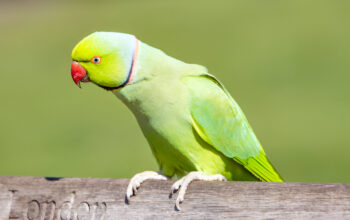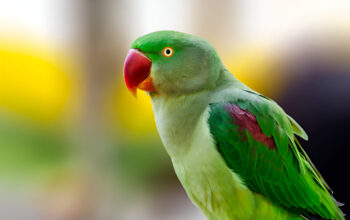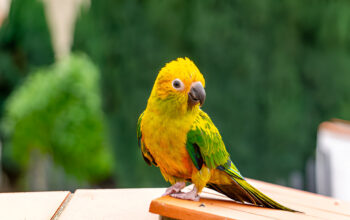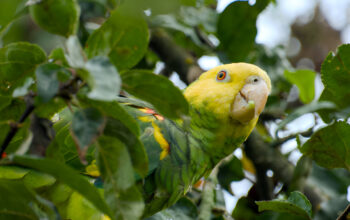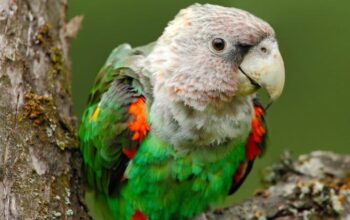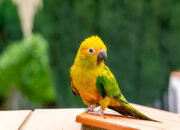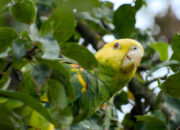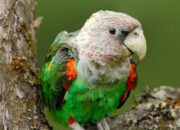Grey Parrots – The Einstein Of The Bird World – The Ultimate Guide
Are talking parrots a source of wonder to you? Are you interested in smart, loyal and beautiful companions? Since there is one, the Grey Parrot ( or African Grey Parrot ) could be the ideal pet bird for you. It’s not just a pet, this bird. It’s a life partner, a daily source of entertainment, and an emotional companion for decades.
Introduction to the African Grey Parrot
The Grey Parrot is a medium-sized grey bird native to Africa. WHY is it SO SPECIAL Those are its intelligence level, imitation of human word expression, strong sense of emotional attachment to the owner. This is no ordinary bird; this is a feathered genius.
Preliminaries and Notation
Other common names: Gray Parrot; Grey Distinguishing between subspecies Once a parrot such as Congo African Greys (CAG) are captive bred and born, it is hard to distinguish them from the others.
- Other Common Names: Gray Parrot, Congo African Grey Parrot, Timneh African Gray Parrot
- Common Name: African Grey Parrot Scientific Name: Psittacus erithacus
- Habitat: West and Central Africa
- Lifespan: 40–60 years or more
- Size: 12–14 inches in length
- Weight: 400–600 grams
- Colour: Greyish some what light to dark greyish ears with a slight red tail.
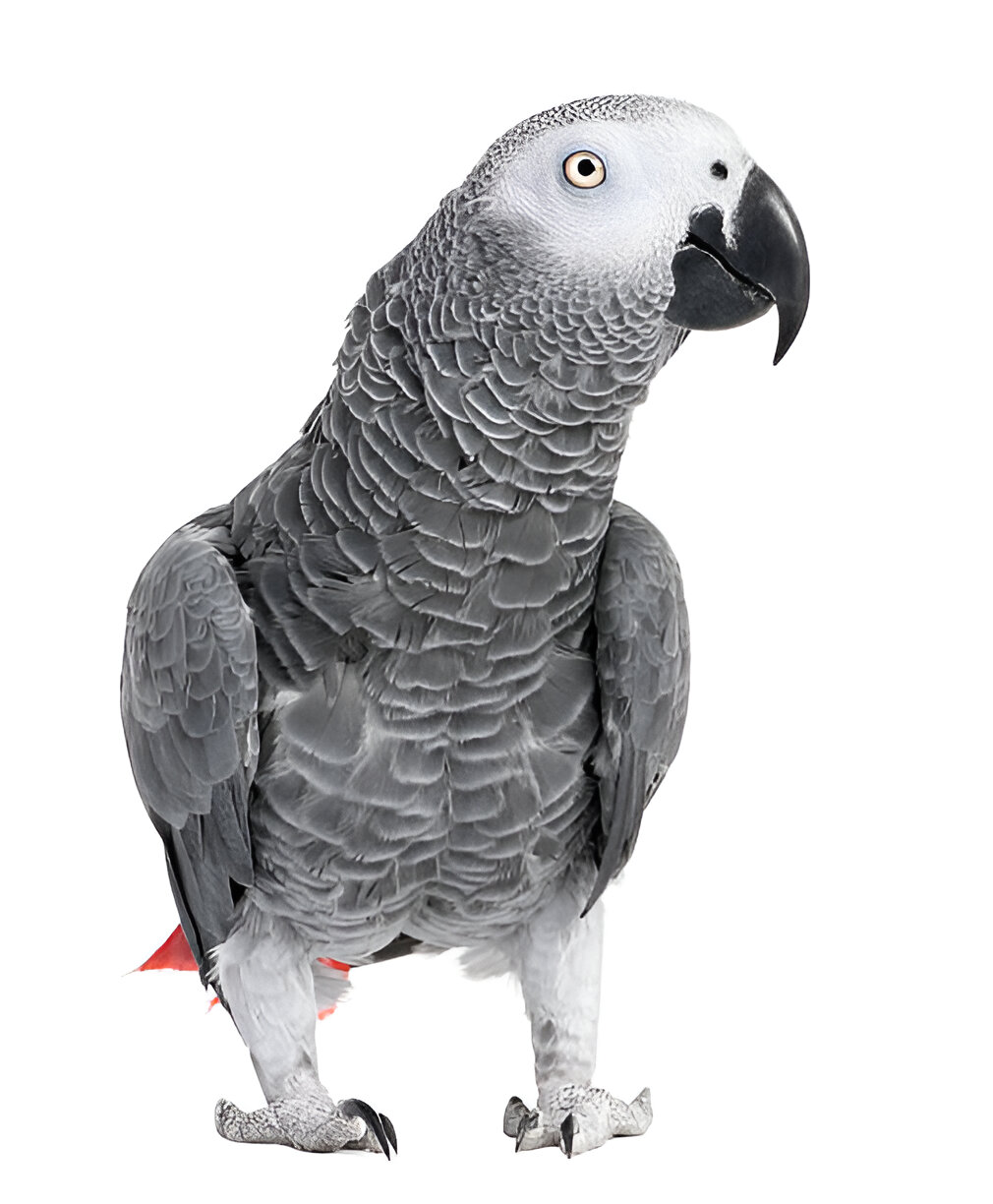
Types of Grey Parrots
There are 2 main species of African Grey Parrots, and they are both stunning.
Congo African Grey Parrot
- The body is larger (reaching 14 inches)
- Light grey feathers
- Bright red tail
- Common in the pet trade
The Timneh African Grey Parrot
- Cemented slightly smaller (about 11inch)
- Baggie feathers of a darker charcoal hue
- Maroon tail instead of red
- Ripens sooner than the Congo variety
Intelligence of the African Grey Parrot
From this excerpt it can be said that Grey Parrots are one of the intelligent parrot species in the world. Research suggests that their intelligence matches that of a 4–5-year-old.
Speech and Vocabulary
- Can learn 1000 or more words
- Understand contextual speech
- Can mimic tone, pitch, and noise (i.e., doorbells, phones, alarms)
- Renowned parrot “Alex” could count, knows shapes, colours, and his thoughts were expressed.
Problem Solving
- Solve puzzles
- Use tools
- Understand cause and effect
- Can complete activities including matching and sequencing
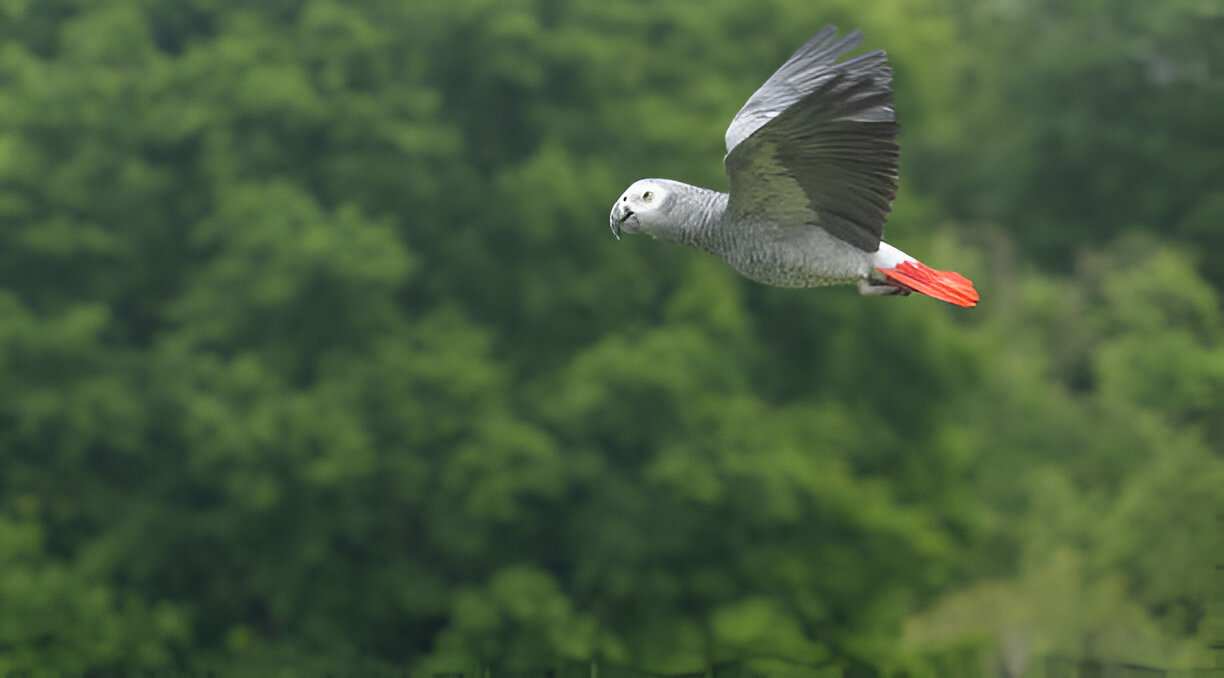
Personalities and Behavior
Grey Parrots aren’t just smart, they’re also emotional and social.
Social Nature
- Bond closely with their families
- Thrive on daily interaction
- Faithful, but can be one-person dogs
Emotional Sensitivity
- May feel jealous, sad and can anxiety
- Need a predictable routine
- Easily disturbed by change of surroundings or neglect
Communication Behaviour of the Grey Parrot
Grey Parrots are known for their mimicry. They don’t just mimic, unlike other parrots; they understand.
Vocal Skills
- Use words in proper context
- Respond to questions
- You for their pets, call you by name or notify you when someone’s there
- Duplicate all TV, radio, and noise around you
Body Language
- Raised feathers = Excitement or aggression
- Puffed up = sleepy or relaxed
- Tail wag = happiness
- Dilated pupils (eye pinning) = Intense emotion (positive or negative)

Optimal home bathing conditions for grey parrots
The perfect environment must be created for the Grey Parrot for psychological and physical health.
Cage Size and Setup
- Minimum size of enclosure: 36” x 24” x 48”
- Horizontal bars for climbing
- Offer several untreated wooden perches
- Add toys, mirrors, ropes, swings
Lighting and Temperature
- Maintain the room temperature at 65°F-80°F.
- Keep the parrot away from direct sunlight or drafts.
- Keep natural or full-spectrum lighting on for 10–12 hours per day. feed
Grey Parrot Diet and Nutrition
A healthy parrot diet develops with the right blend and sources of nutritional eating.
Core Diet
- Feed 60–70% high-quality pellets
- Feed 30–40% fresh fruits and vegetables
- Fruits such as apples, bananas, berries, mangoes
- Veggies such as carrots, broccoli, spinach, and bell peppers
- Nut and seed treats as treats, sometimes
Toxic Foods to Avoid
- Avocado
- Chocolate
- Caffeine
- Onions and garlic
- Alcohol
- Dairy
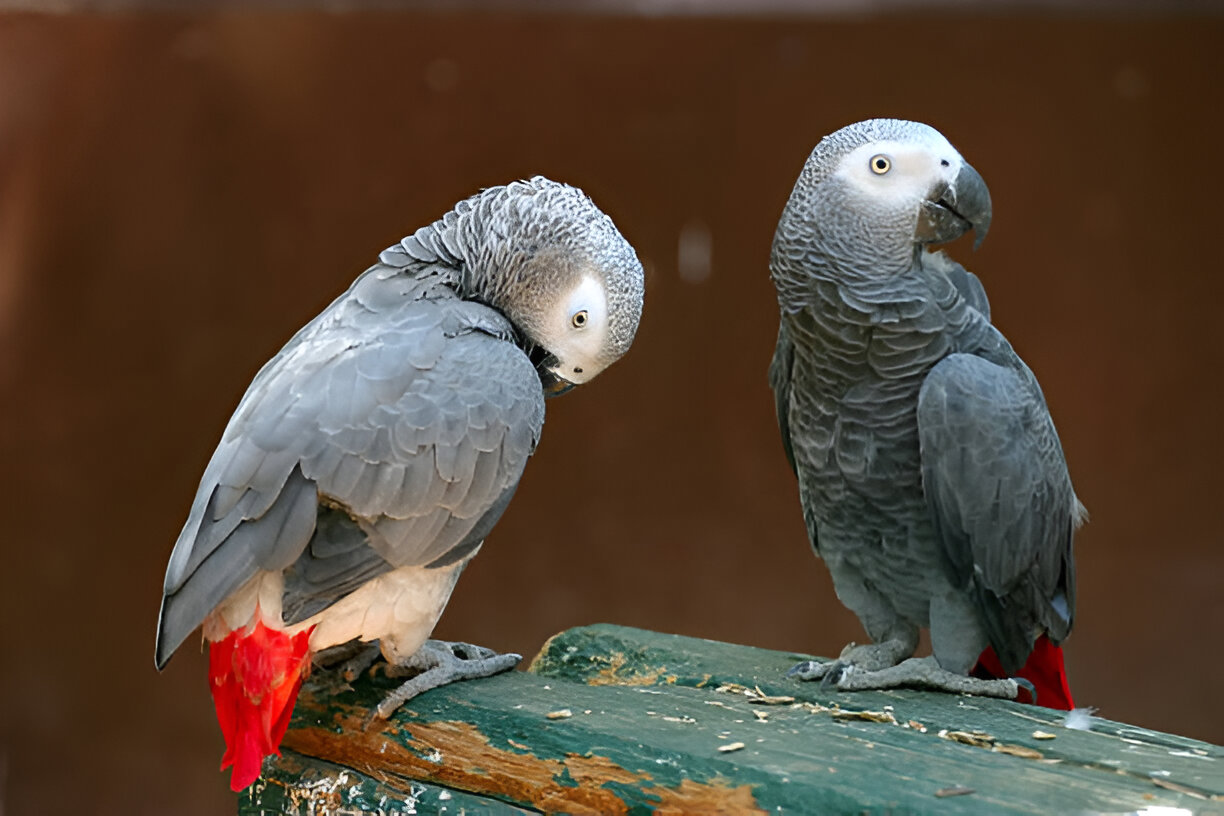
The Grooming and Hygiene Need
Regular bathing is essential to The good health of your Grey Parrot.
Bathing
- Provide a shallow water dish or spray 2–3 times a week.
- Mold can be prevented by allowing the cage to dry fully
- Stay away from the cold water and chilly rooms
Nail and Beak Maintenance
- Natural chewing on wood and cuttlebones trims the beak
- Trim nails to keep them healthy Use grooming perches
- Only trim nails if they are overgrown or curled (bring a vet)
Common Ailments of the African Grey parrot
Congo African Greys are typically healthy birds with proper care, but do fall victim to certain avian illnesses.
Common Diseases
- Psittacosis (parrot fever)
- Aspergillosis (fungus in the lungs)Dubey JP, Refai M, VanMeter P, et al.
- lack of calcium (extremely common)
- Feather Plucking (usually stress/anxiety or boredom)
Signs of Illness
- Changes in vocalization
- Puffy feathers
- Reduced appetite
- Labored breathing
- Discolored droppings
Routine check-ups should be done once every 6–12 months by an avian vet.
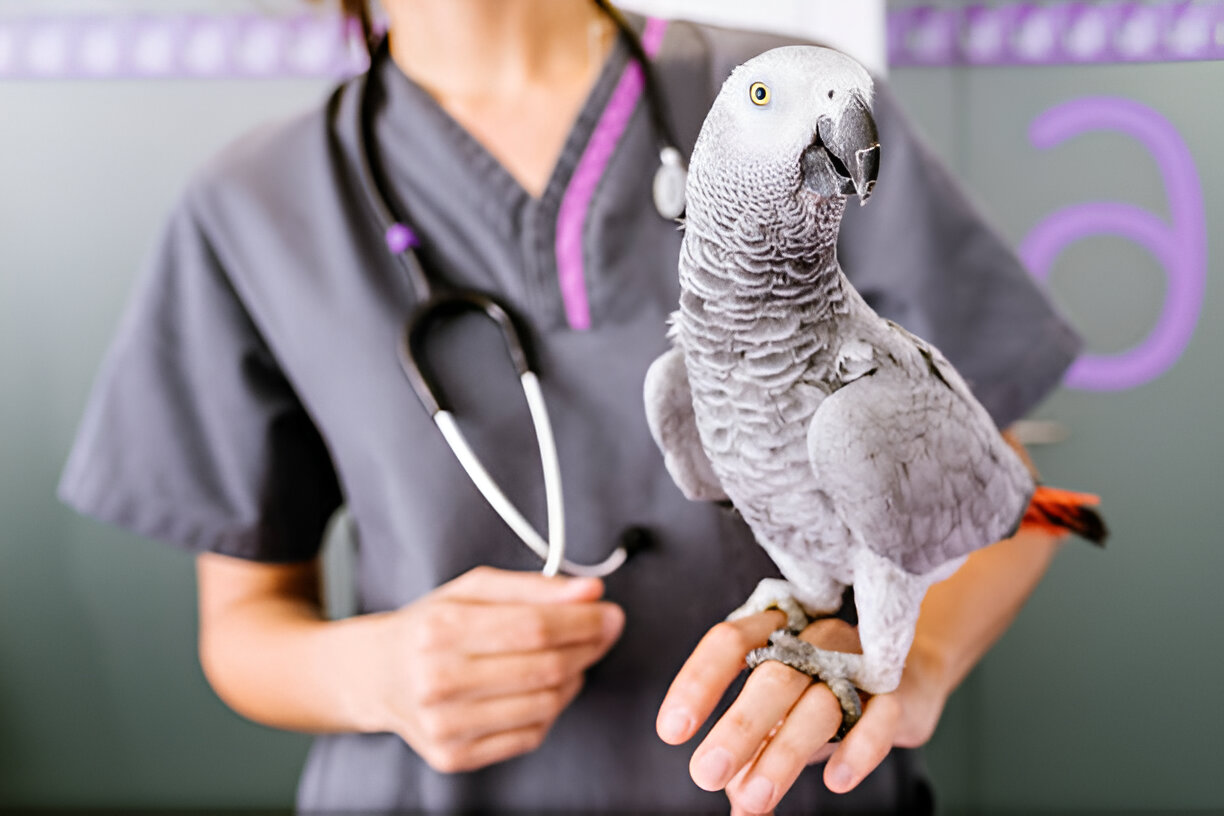
The Training Techniques Of Grey Parrot
Training creates a stronger bond and better communication.
Positive Reinforcement
- Reward with healthy treats and lots of praise
- Sessions should be kept short (5–10 minutes)
- Don’t shout or punish – it breeds fear
Fun Commands to Teach
- “Step Up”
- “Hello” or “Goodbye”
- “Dance” or “Sing”
- Clicker training Fun Games and Tricks
Breeding Grey Parrots
Grey Parrots are monogamous and can be bred only with knowledge and responsibility.
Breeding Requirements
- Large aviary or breeding cage
- Privacy and minimal impact on others
- Healthy eating/ Diet and calcium substitutes
Baby Grey Parrots
- Hatch in 28 days
- Hand-feeding often necessary if parent-reared chicks fail to thrive.
- Socialization starts early

Legal and Ethical Implications
Grey Parrots are listed on CITES in many countries. Always ensure:
Ethical Adoption
- Only purchase from a reputable, legal breeder
- Avoid wild-caught birds
- Ask for documentation and health certificates
Is a Gray Parrot the Right Pet for You?
Before Bringing Home a Grey Parrot, consider:
Pros
- Very Smart Very Talkitive
- Emotional bonding with owners
- Fun, comical, and interactive
- Live for decades
Cons
- Long-term commitment
- Needs activity and stimulation every day
- Can be loud and messy
- Prone to emotional stress

Conclusion: Brilliant Bird for a Brilliant Owner
Having a Grey Parrot isn’t just about taking care of a pet; It’s about making a lifetime friend with one of the smartest animals on the planet. From the very way you converse with them to the emotional well-heing affects, these birds can provide you with joy, love, and stimulating experiences like no other can.
If you are able to devote, care and grow up with your grey-haired friend, a Gray Parrot would be an ideal pet for you.

